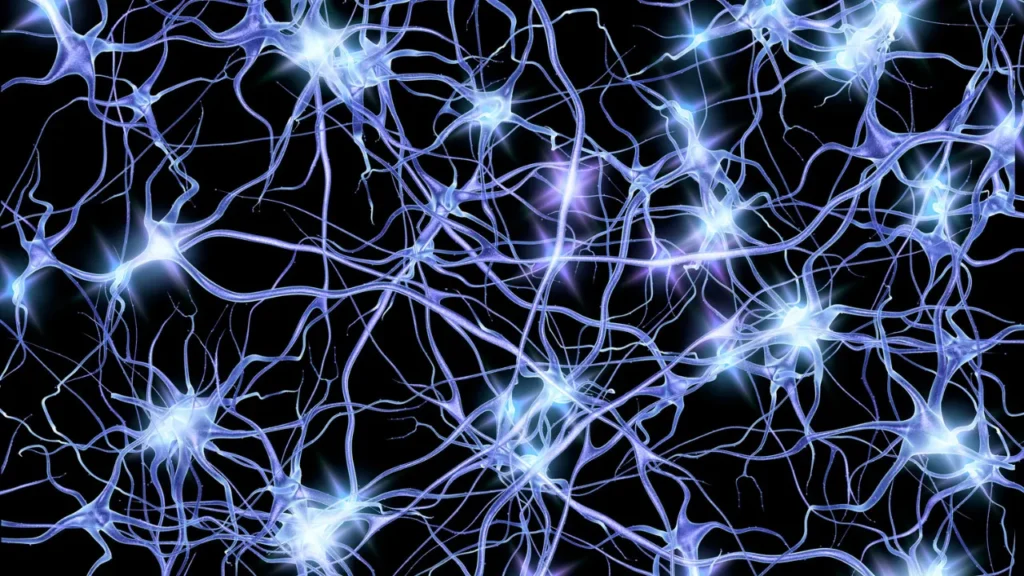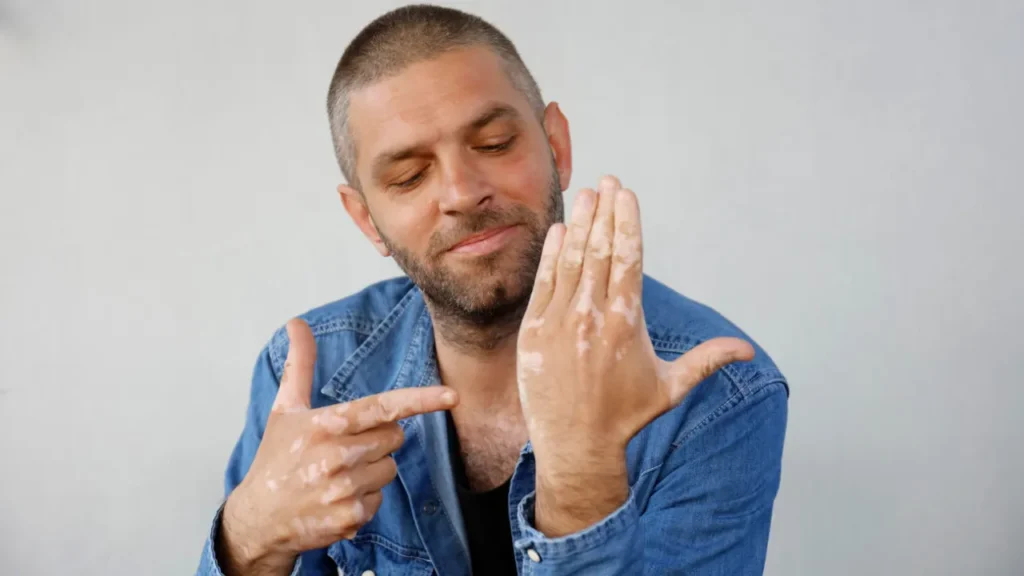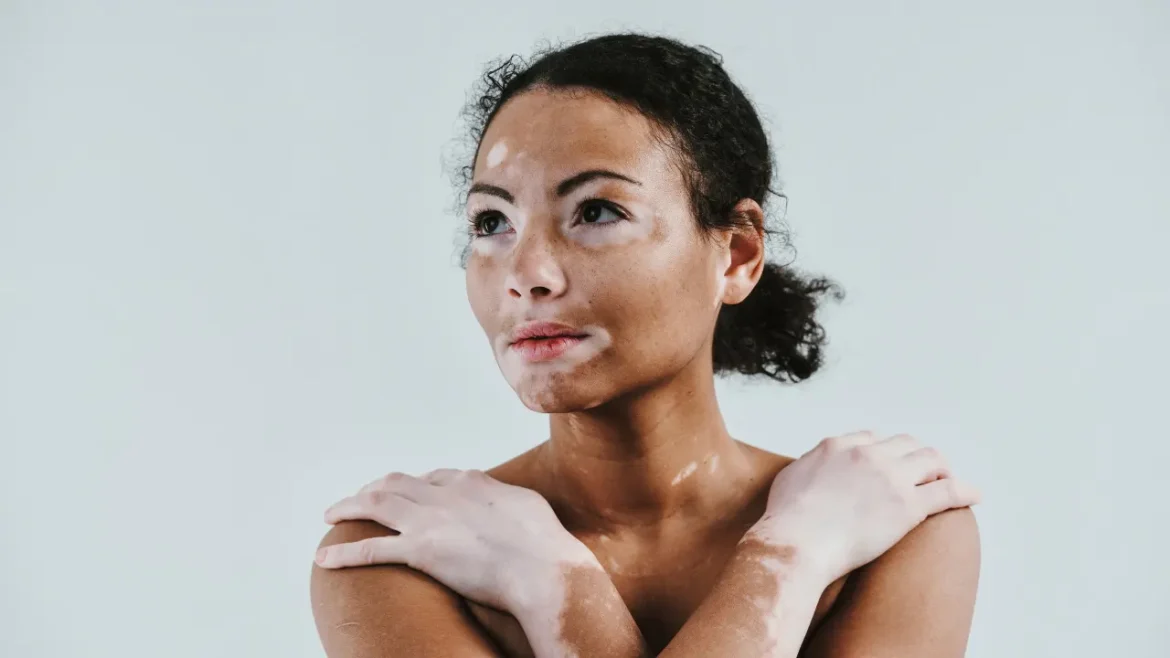Description
The multifactorial disease vitiligo affects between 1% and 2% of people worldwide. The skin pigment-producing cells known as melanocytes are obliterated in the process. Vitiligo patients may experience emotional distress due to, the formation of white patches on their skin. Depigmented patches of skin remain the most prevalent vitiligo symptoms, and they most frequently appear on the hands, arms, feet, and other sun-exposed body parts. These patches may come in a variety of sizes and shapes, and they can advance in an unforeseen manner. The hair, mucous membranes, and indeed the eyes can be impacted by vitiligo besides the aforementioned locations. Although the ailment causes no physical discomfort, it may have a severe psychological effect.
You May Also Like:
5 GREAT WAYS TO REDUCE STRESS AND ELEVATE MOOD WITHOUT ALCOHOL
THE BEST SUPPLEMENTS TO SUPPORT SLEEP: TRY GOLDEN MILK TO REDUCE STRESS AND RELAX BEFORE BED
Vitiligo: Description, Causes, and Treatment Protocol is an original (HealthXWire) article.
Possible Causes
The exact cause of vitiligo that led to its onset remains unknown. Nevertheless, several possible reasons are linked to vitiligo: –
Genetic Predisposition: Susceptibility to vitiligo is influenced by genetic factors. There is proof that particular genes are linked to a higher risk of vitiligo development. According to studies, people who have vitiligo in their family are at greater risk of getting the condition.
Autoimmune Dysfunction: It is generally accepted that melanocytes, the skin’s pigment-producing cells, are wrongly attacked and destroyed by the immune system in vitiligo, an autoimmune condition. It is believed that vitiligo development is significantly influenced by autoimmune dysfunction.
Neurochemical Imbalances: According to certain experts, dopamine-related neurochemical abnormalities may have a role in the vitiligo growth process. Nervous system imbalances can interfere with melanocyte function and cause depigmentation.
Oxidative Stress: Reactive oxygen species (ROS) generation and the body’s capacity to neutralize them through antioxidants are out of balance, which leads to oxidative stress. The degeneration of pigment-producing cells associated with vitiligo may be facilitated by oxidative stress, which can harm cells, including melanocytes.
Hormonal and Neural Factors: The emergence of vitiligo has been linked to neurological variables, including neuropeptides and neural mediators. Furthermore, hormonal changes that take place throughout pregnancy or menopause, for example, may affect melanocyte function and aid in the onset or progression of vitiligo.
Environmental Triggers: Certain environmental causes can trigger vitiligo, especially in those who are genetically predisposed. These triggers include exposure to particular chemicals, poisons, or traumatic situations. However, specific environmental factors are still being researched.

Exacerbating and Mitigating Factors
The advancement of vitiligo can be made worse or better by exacerbating and moderating variables, accordingly. Individuals with vitiligo can more effectively control their illness by recognizing and comprehending these aspects. The following are frequently acknowledged exacerbating and alleviating factors in vitiligo, though they may differ from individual to individual: –
Exacerbating Factors: –
Trauma or Injury: Cuts, burns, or other types of skin trauma can result in fresh vitiligo patches developing or existing ones growing. New vitiligo patches might develop at the location of trauma or damage due to the Koebner phenomenon.
Sunburn: Sunburn can cause or aggravate vitiligo patches.
Chemical Exposure: Exposure to specific substances or chemicals, like industrial solvents, may cause or aggravate vitiligo. This is especially important for people whose jobs require them to be around chemicals.
Hormonal Changes: The intensity and development of vitiligo in certain individuals might be affected by hormonal changes, including those that occur while pregnant or in menopause. Hormonal fluctuations can affect immunological function and melanocyte activity, although the precise mechanisms are not entirely known.
Emotional Stress: Vitiligo might become worse due to psychological issues and emotional stress. Stress may interfere with the immune system, accelerating the illness. The fact that vitiligo patches are noticeable can also result in emotional anguish, which even raises stress levels.
Mitigating Factors: –
Psychological Support: The psychological effects of vitiligo can be greatly reduced with adequate psychological assistance and counseling. Self-esteem and coping skills can be enhanced through therapy, support networks, and social interaction with those who share the illness.
Sun Protection: Vitiligo management necessitates safeguarding the skin from overexposure to the sun. To avoid sunburn and lessen depigmentation, use sunscreen with a high SPF, dress in protective clothing, and locate shade during the height of the sun’s rays.
Camouflage Techniques: Utilizing cosmetic camouflage items, including specially developed makeup or cover creams, may help hide vitiligo patches and boost confidence.
Healthy Living and Self-Care: Good self-care techniques, such as eating healthily, exercising frequently, getting enough sleep, abstaining from smoking, and limiting alcohol intake, might improve general well-being and possibly slow the spread of vitiligo.
Stress Management: Vitiligo can be less aggravated by controlling stress levels using methods including meditation, exercise, yoga, and relaxation techniques. Practices for reducing stress may enhance the immune response and slow the spread of disease.


Standard Treatment Protocols
The following are some of the standard vitiligo treatment options that are used to repigment the illness’s affected regions, slow disease progression, and enhance the general standard of living: –
Topical Corticosteroids: These often serve as the initial therapy for vitiligo. Corticosteroids support repigmentation by decreasing inflammation and stifling the immunological response in the afflicted regions.
Calcineurin Inhibitors: In places where corticosteroids are not appropriate, like the face and genitalia, topical calcineurin inhibitors, including pimecrolimus and tacrolimus, can be utilized. Through immune system modulation and repigmentation promotion, they function.
Psoralen plus Ultraviolet A (PUVA) Therapy: PUVA entails the use of the photosensitizing drug Psoralen, followed by exposure to UVA radiation. Psoralen makes the skin more sensitive to UVA, which promotes repigmentation. The treatment for extensive vitiligo is beneficial.
Narrowband Ultraviolet B (NB-UVB) Therapy: A particular UVB light wavelength is used in NB-UVB therapy to expose the afflicted skin. This therapy increases melanocyte activity and promotes repigmentation.
Surgical Interventions: With stable vitiligo that is not improving with conventional therapies, surgical techniques are taken into consideration. These involve suction blister grafting, punch grafting, and autologous melanocyte transplantation. Melanocytes are moved from unaffected to hypopigmented sites during these operations.
Treatment Options
Vitiligo adjunct therapy alternatives are extra therapies that may be employed in addition to established treatment regimens to increase their efficacy conceivably. Following are some other vitiligo treatment alternatives: –
Nutritional Supplements: Given their capacity to promote general health and perhaps affect melanocyte function, nutritional supplements are being investigated as potential adjunct treatments for vitiligo. The possible benefits of the following dietary supplements in treating vitiligo include the following: –
- Folic Acid
Vitamin B9 or folic acid serves as vital for the production and maintenance of DNA. Folic acid supplementation might be helpful in the treatment of vitiligo because it might promote melanocyte functioning and repigmentation, according to certain research.
- Vitamin B12
For many physiological functions, including the formation of melanin, vitamin B12 is crucial. Studies have examined the function of vitamin B12 supplements in treating vitiligo.
- Vitamin C
Antioxidant vitamin C aids in preventing oxidative stress on cells. It might facilitate melanocyte activity and encourage repigmentation.
- Vitamin E
Antioxidants like vitamin E can also lessen oxidative stress. Vitamin E supplementation has been proposed to improve melanocyte health and perhaps help with repigmentation.
- Zinc
The creation of melanin is one of the many biological activities that zinc is essential for. According to certain research, zinc supplementation may help with vitiligo by promoting melanocyte function.
Natural and Herbal Remedies: As potential complementary therapies for vitiligo, herbal and natural therapies are being investigated. The following natural and herbal treatments are researched for their possible advantages in vitiligo: –
- Aloe Vera
A plant noted for its wound-healing and anti-inflammatory capabilities is aloe vera. Aloe vera gel applied to vitiligo patients’ afflicted areas has reportedly improved repigmentation in certain cases.
- Ginkgo Biloba
An herbal treatment called ginkgo biloba is popular for its anti-inflammatory and antioxidant qualities. According to certain research, ginkgo biloba extract could alleviate vitiligo by encouraging repigmentation.
- Turmeric
Curcumin, a substance found in turmeric, is an active ingredient with anti-inflammatory and antioxidant effects.
- Psoralea corylifolia or Bakuchiol
An herb frequently used in conventional medicine is called bakuchiol, or Psoralea corylifolia. However, psoralens make the skin more sensitive to ultraviolet (UV) radiation.
- Other Herbal Remedies
Other herbal treatments for vitiligo have also been investigated, including ginseng, red clay, and oil from black cumin seeds. Nevertheless, there is scant or no scientific data to support their safety and effectiveness.
However, it is important to remember that herbal and natural medicines can affect people differently, may interact negatively with drugs, or have other negative consequences. To verify the safety, suitability, and ideal application of natural and herbal treatments as adjunct therapies for vitiligo, consultation with a healthcare specialist or a dermatologist is imperative.


Conclusion
Vitiligo is a complex skin condition that involves multiple factors and is often characterized by the loss of pigment-producing cells. Vitiligo impacts your physical appearance in which you will have patches of depigmented patches of affected skin. Vitiligo is believed to involve an autoimmune process and people with specific genetic predisposition may be more susceptible to vitiligo. The treatment of vitiligo focuses on managing the depigmented areas and minimizing the contrast with the surrounding skin.
Topical corticosteroids, calcineurin inhibitors, psoralen plus ultraviolet A (PUVA) therapy, and narrowband ultraviolet B (NB-UVB) therapy are commonly used to repair the affected skin. Skin trauma like cuts or burns or chemical exposure may result in the growth of fresh vitiligo patches. Hence, it is important to remember that vitiligo is a complex condition and individuals require constant psychological support and counseling. Continued advancements in new and effective treatment options are aimed to improve the quality of life and foster a more inclusive understanding of skin conditions in society.


Additional resources for further reference
https://my.clevelandclinic.org/health/diseases/12419-vitiligo
https://www.mayoclinic.org/diseases-conditions/vitiligo/symptoms-causes/syc-20355912
https://www.medicalnewstoday.com/articles/245081
https://www.aad.org/public/diseases/a-z/vitiligo-overview
Important Note: The information contained in this article is for general informational purposes only, and should not be construed as health or medical advice, nor is it intended to diagnose, prevent, treat, or cure any disease or health condition. Before embarking on any diet, fitness regimen, or program of nutritional supplementation, it is advisable to consult your healthcare professional in order to determine its safety and probable efficacy in terms of your individual state of health.
Regarding Nutritional Supplements Or Other Non-Prescription Health Products: If any nutritional supplements or other non-prescription health products are mentioned in the foregoing article, any claims or statements made about them have not been evaluated by the U.S. Food and Drug Administration, and such nutritional supplements or other health products are not intended to diagnose, treat, cure, or prevent any disease.
Table of Contents


